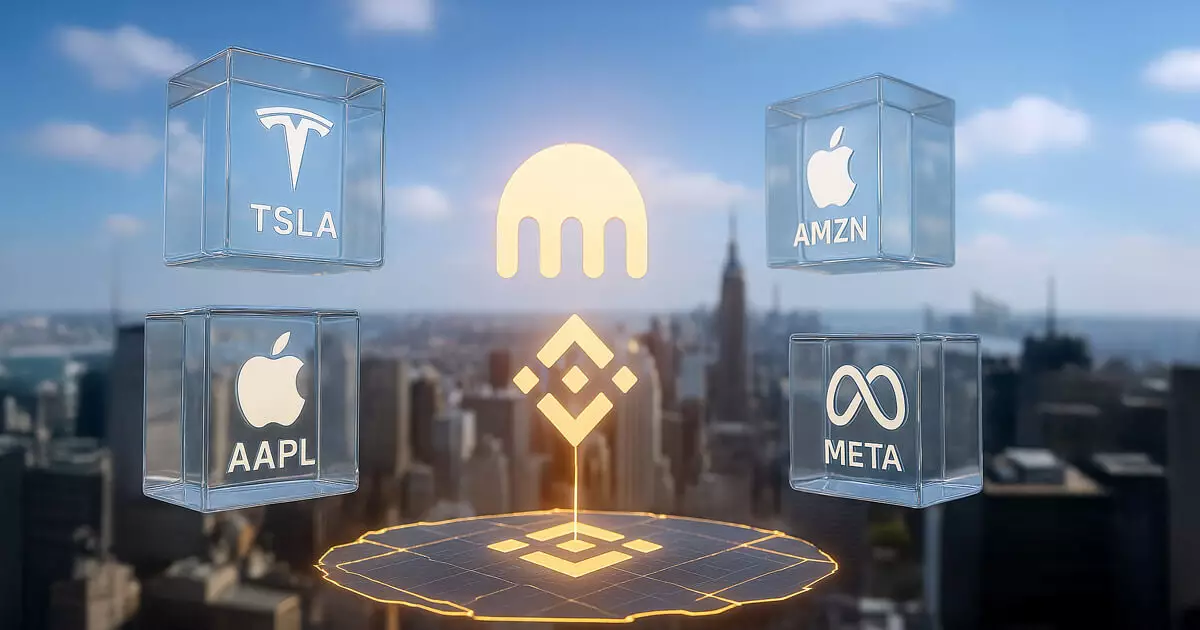Kraken’s recent expansion into BNB Chain with its xStocks product signals a pivotal shift in how we perceive the future of finance. While on the surface this development appears to democratize access to US-equity-based assets, a deeper analysis reveals unsettling implications. Moving tokenized stocks like AAPLx and TSLAx onto a Binance-backed blockchain isn’t merely about convenience; it underscores how traditional financial boundaries are becoming increasingly porous, risking the erosion of market stability and regulatory oversight.
This transition toward blockchain integration heralds a more decentralized approach to trading, one that promises flexibility and speed. Yet, it simultaneously strips away the safeguards embedded within legacy exchanges like the NYSE. By enabling instant cross-border transfers with programmable settlement, these assets threaten to undermine decades of prudent financial regulation. The core question becomes: are we genuinely ready for such rapid, borderless trading, or are we rushing toward chaos masked as innovation?
The Power of Programmability and the Risks of Unregulated Growth
Kraken’s co-CEO Arjun Sethi refers to tokenized equities as “programmable settlement primitives,” thus emphasizing their potential to revolutionize liquidity and transaction speed. From a libertarian perspective, this autonomy is appealing; it pushes back against bureaucratic delays and promotes financial sovereignty. However, this very programmability can become a double-edged sword. It invites manipulation, exacerbates volatility, and magnifies the risk of systemic failures—especially as these assets become intertwined with DeFi protocols like PancakeSwap.
Furthermore, the appeal of a “multichain” ecosystem fits neatly into a narrative advocating for financial innovation, but it neglects the necessary oversight. Without stringent regulation, these tokenized assets could foster an environment ripe for fraud, pump-and-dump schemes, and sudden liquidity freezes. The reality is that, while decentralization offers exciting possibilities, it also dilutes accountability—placing consumer protections at significant risk.
The Competitive Threat to Traditional Financial Institutions
The rapid growth of asset tokenization is not only a technical evolution but a direct challenge to entrenched financial institutions. As Robinhood and industry giants like BlackRock pursue tokenization strategies, the traditional exchanges face mounting pressure. Their business model—centered around centralized liquidity pools, scheduled trading hours, and fee-based revenue—is incompatible with the fluid, 24/7 nature of blockchain-based assets.
This shift signifies a fundamental threat: if the legacy systems fail to adapt, they risk obsolescence. Decentralized trading platforms and blockchain-based settlements could steal market share, not just in terms of volume but also influence over market liquidity and data. Moreover, traditional players might find their core revenue streams slipping through their fingers as decentralized platforms offer more frictionless, instant transactions. Resistance to change, coupled with overconfidence in existing regulatory frameworks, could ultimately hasten their decline.
An Uncomfortable Future of Accelerated Volatility
The integration of tokenized stocks into multi-layered blockchain ecosystems could amplify market volatility, especially during off-hours. While round-the-clock trading appeals to global investors, it opens the door to more frequent and unpredictable swings in asset prices. Traditional markets, with their structured hours and safeguards, provide stability. Moving away from that model risks fostering an environment where volatility becomes the new normal, making markets less predictable and potentially more fragile.
In the end, these developments raise critical questions about the very foundation of financial stability, regulatory oversight, and the future role of traditional institutions. The shift toward tokenized securities on robust blockchain platforms may offer immense benefits, but it also demands a sober reflection on the risks involved. Embracing innovation without adequate safeguards could undo the carefully calibrated balance that has kept markets resilient for decades.



















Leave a Reply